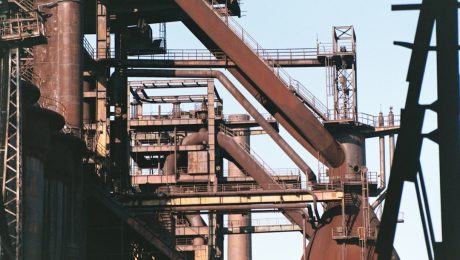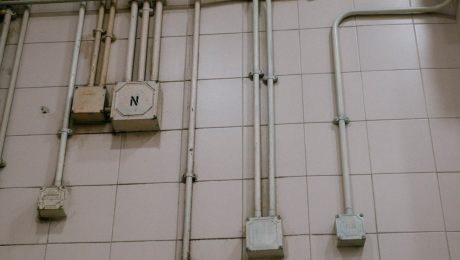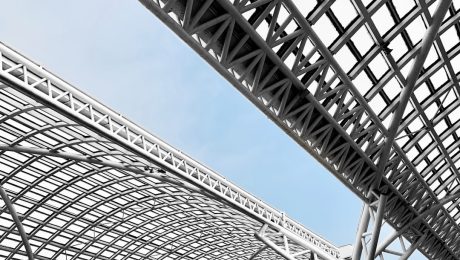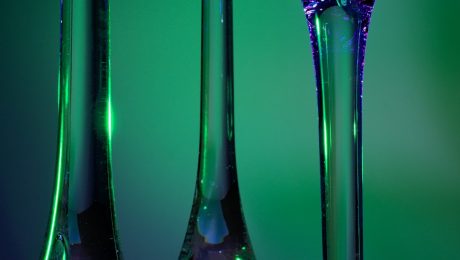Brightwire is a powerful, open-source machine learning library written in C# for the .NET platform. It offers a comprehensive suite of tools for building and training neural networks, handling data efficiently, and visualizing results. This post will delve into the key features that make Brightwire a compelling choice for your next machine learning project.
1. Building and Training Neural Networks with Ease
Brightwire’s core strength lies in its ability to simplify the process of building and training neural networks. It provides a high-level, intuitive API that abstracts away much of the low-level complexity associated with implementing neural network architectures. You can easily define layers like fully connected, convolutional, recurrent (LSTM, GRU), and more, connecting them to create complex models. The library supports various activation functions, optimizers (Adam, SGD, RMSProp, etc.), and regularization techniques, allowing for fine-grained control over the training process. Its support for both feedforward and recurrent networks makes it suitable for a wide range of applications, from image classification to natural language processing.
Furthermore, Brightwire facilitates experimentation. Switching between different network architectures, optimizers, or hyperparameters is straightforward, allowing for rapid prototyping and iterative model improvement. The library’s modular design promotes reusability, enabling you to easily incorporate pre-trained models or custom layers into your projects.
2. Efficient Data Handling and Preprocessing
Efficient data handling is crucial for any machine learning project. Brightwire addresses this by providing tools for loading, cleaning, and preprocessing data from various sources. It supports common data formats like CSV, JSON, and binary files. The library includes functionalities for handling missing values, normalizing features, and creating one-hot encodings, simplifying the data preparation pipeline. Its ability to work with both in-memory and out-of-core datasets allows it to handle datasets of any size, even those that exceed available RAM.
Brightwire’s data handling capabilities are further enhanced by its support for various data augmentation techniques. These techniques can be used to artificially increase the size of your dataset, improving the robustness and generalization performance of your models. This is particularly useful when dealing with limited data.
3. Powerful Backpropagation and Optimization Algorithms
Brightwire implements efficient backpropagation algorithms, the cornerstone of training neural networks. These algorithms enable the network to learn by adjusting its weights based on the error it makes in its predictions. The library supports various optimization algorithms, including Adam, SGD, RMSProp, and more, each with its own strengths and weaknesses. The choice of optimizer can significantly impact the training speed and the final performance of the model. Brightwire allows you to easily experiment with different optimizers and hyperparameters to find the best configuration for your specific problem.
Beyond basic optimization, Brightwire incorporates advanced techniques like momentum and learning rate scheduling, further enhancing the training process. These techniques can help to overcome challenges such as getting stuck in local minima and prevent oscillations during training.
4. Comprehensive Visualization and Monitoring Tools
Understanding the training process is essential for building effective models. Brightwire provides built-in visualization tools that allow you to monitor the training progress in real-time. You can track metrics such as loss, accuracy, and gradients, providing valuable insights into the performance of your model. This real-time feedback enables early detection of potential problems, such as overfitting or slow convergence. The visualization features allow for a deeper understanding of the model’s behavior and aid in making informed decisions about model architecture and hyperparameters.
Furthermore, Brightwire can generate visualizations of the network architecture itself, making it easier to understand the complexity and flow of information within the model. This visual representation is particularly useful for debugging and for communicating the model’s structure to others.
5. Extensibility and Community Support
Brightwire is designed with extensibility in mind. Its modular architecture allows developers to easily extend its functionality by adding custom layers, activation functions, optimizers, and other components. This flexibility makes it adaptable to a wide range of machine learning tasks and allows users to tailor the library to their specific needs. The open-source nature of Brightwire fosters a vibrant community, providing access to a wealth of resources, including documentation, tutorials, and community support forums. This collaborative environment facilitates knowledge sharing and problem-solving, making it easier to learn and use the library effectively.
The active community also contributes to the ongoing development and improvement of the library, ensuring that it remains up-to-date with the latest advancements in machine learning.
In conclusion, Brightwire offers a compelling combination of ease of use, powerful features, and extensibility, making it a strong contender among machine learning libraries. Its comprehensive suite of tools, from neural network construction to data handling and visualization, empowers developers to build and deploy sophisticated machine learning models efficiently.
Tags:
- Brightwire
- Machine Learning Library
- Neural Network
- C# Machine Learning
- .NET AI
Steel. The very word evokes images of strength, resilience, and enduring structures. But beyond the inherent properties, lies a world of innovative applications and engineering marvels achieved through carefully planned steel solutions. This post delves into compelling case studies that showcase the versatility and impact of steel in diverse sectors, highlighting its crucial role in shaping our modern world.
1. Skyscrapers: Reaching New Heights with Steel
The iconic skyline of any major city is a testament to the power of steel. Skyscrapers, those breathtaking monuments to human ingenuity, rely heavily on steel’s high strength-to-weight ratio. Consider the Burj Khalifa, the world’s tallest building. Its intricate steel structure, a marvel of engineering, supports unimaginable weight and withstands extreme environmental conditions. The design involved meticulous calculations and advanced steel alloys to ensure stability and safety at such unprecedented heights. The use of high-strength steel allowed for thinner columns and beams, maximizing usable space within the building. This case study demonstrates how steel solutions enable architects and engineers to push the boundaries of vertical construction, creating structures that redefine urban landscapes.
2. Bridges: Spanning Divides with Steel’s Strength
Bridges, whether gracefully arching over rivers or boldly spanning vast chasms, are testaments to steel’s ability to bridge divides – both literally and figuratively. The Golden Gate Bridge, a global icon, is a prime example of steel’s role in large-scale infrastructure projects. Its suspension design, utilizing high-tensile steel cables and a robust steel deck, showcases the material’s capacity to withstand immense loads and dynamic forces. Modern bridge construction increasingly incorporates innovative steel solutions, such as high-performance steel alloys and advanced welding techniques, to enhance durability, reduce weight, and improve aesthetic appeal. These advancements allow for longer spans, more efficient designs, and increased resistance to seismic activity and corrosion.
3. Sustainable Steel Solutions: A Greener Future
The perception of steel as an environmentally unfriendly material is outdated. The steel industry is actively pursuing sustainable practices, resulting in significant advancements in reducing its carbon footprint. Recycled steel, a key component in many modern steel solutions, drastically minimizes the energy required for production compared to using virgin materials. Furthermore, the use of steel in long-lasting infrastructure contributes to a circular economy, as steel structures can be deconstructed and their components recycled at the end of their lifespan. Case studies involving the use of recycled steel in building construction and infrastructure projects demonstrate the commitment towards reducing environmental impact and promoting sustainable development. This commitment is leading to a greener future built on steel.
4. Innovative Steel Applications in Automotive Industry
Beyond large-scale structures, steel plays a crucial role in the automotive industry. High-strength steel alloys are used extensively in vehicle bodies to enhance safety and fuel efficiency. Advanced high-strength steel (AHSS) allows for lighter vehicles with improved crashworthiness, reducing fuel consumption and emissions. The development of tailored blanks, which combine different steel grades within a single component, further optimizes weight and strength distribution. Case studies examining the use of AHSS in vehicle manufacturing demonstrate the material’s capacity to meet the evolving demands of the automotive sector, balancing performance, safety, and environmental concerns.
5. Steel in Offshore Wind Energy: Powering a Renewable Future
The burgeoning renewable energy sector relies heavily on steel’s strength and durability. Offshore wind turbines, towering structures harnessing the power of the sea, require robust steel foundations and support systems to withstand harsh marine environments. These structures, often located in deep waters, face extreme weather conditions, including high winds, waves, and currents. The steel used in their construction must possess exceptional corrosion resistance and fatigue strength. Case studies of offshore wind farms demonstrate how innovative steel solutions are crucial for building reliable and sustainable renewable energy infrastructure, contributing to a cleaner and more sustainable energy future.
In conclusion, the case studies highlighted above showcase the remarkable versatility and enduring strength of steel. From the towering heights of skyscrapers to the vast spans of bridges and the intricate designs of automobiles, steel continues to play a pivotal role in shaping our world. With ongoing advancements in steel technology and a growing commitment to sustainability, steel solutions will undoubtedly continue to drive innovation and progress across diverse sectors for generations to come.
SEO Tags:
- Steel Solutions
- Steel Construction Case Studies
- Structural Steel Applications
- Sustainable Steel
- High-Strength Steel
In today’s technologically advanced world, technical guides and manuals are indispensable tools for understanding and utilizing complex products and systems. Whether you’re a user grappling with a new software program or a technical writer crafting documentation for a cutting-edge device, understanding the nuances of these guides is crucial. This comprehensive guide explores the multifaceted world of technical documentation, offering insights for both creators and consumers.
The Importance of Clear and Concise Technical Writing
Effective technical writing is the cornerstone of any successful technical guide. It’s more than just explaining features; it’s about conveying complex information in a clear, concise, and accessible manner. Poorly written documentation can lead to user frustration, lost productivity, and even safety hazards. Key principles include:
- Simplicity and Clarity: Avoid jargon and technical terms unless absolutely necessary. Use plain language and short sentences.
- Logical Structure: Organize information logically, using headings, subheadings, and bullet points to improve readability.
- Visual Aids: Incorporate diagrams, screenshots, and illustrations to enhance understanding and break up large blocks of text.
- Accuracy and Completeness: Ensure all information is accurate, up-to-date, and comprehensive. Omitting crucial details can lead to significant problems.
- Accessibility: Consider users with disabilities. Use appropriate font sizes, color contrasts, and alternative text for images.
Different Types of Technical Guides and Manuals
Technical documentation comes in various forms, each tailored to specific needs and audiences. Understanding these variations is crucial for both writers and users:
- User Manuals: These guides provide step-by-step instructions for using a product or software. They often include troubleshooting sections and safety information.
- Installation Guides: These manuals detail the process of setting up and configuring a product, often including diagrams and checklists.
- Troubleshooting Guides: These documents focus on identifying and resolving common problems users might encounter. They typically offer solutions and workarounds.
- API Documentation: For software developers, API documentation explains how to interact with a software application’s programming interface.
- Training Manuals: These guides provide comprehensive training on using a product or system, often including exercises and assessments.
The Role of Visuals in Technical Documentation
Visuals are not just aesthetically pleasing additions; they’re integral to effective technical communication. They can significantly improve comprehension and reduce the cognitive load on the reader. Effective visuals include:
- Screenshots: Show users exactly what they should see on their screens.
- Diagrams: Illustrate complex processes or systems in a simplified manner.
- Flowcharts: Visually represent step-by-step processes or workflows.
- Tables: Organize data in a clear and concise format.
- Videos: Provide dynamic demonstrations and tutorials.
Remember, visuals should be high-quality, clearly labeled, and integrated seamlessly into the text.
Creating Effective Technical Guides: A Step-by-Step Approach
The process of creating a technical guide involves several key steps:
- Audience Analysis: Identify your target audience and their level of technical expertise.
- Information Gathering: Collect all necessary information from subject matter experts and product specifications.
- Content Organization: Structure the information logically, using headings, subheadings, and a clear table of contents.
- Writing and Editing: Write clear, concise, and accurate text, ensuring consistent terminology and style.
- Proofreading and Review: Thoroughly proofread the document for errors in grammar, spelling, and punctuation.
- Design and Layout: Create a visually appealing and easy-to-navigate document using appropriate fonts, images, and formatting.
- Testing and Feedback: Test the document with members of your target audience to gather feedback and make necessary revisions.
Maintaining and Updating Technical Guides
Technical guides are not static documents. Products evolve, software gets updated, and new features are added. Therefore, regular maintenance and updates are crucial to ensure accuracy and relevance. This involves:
- Regular Reviews: Schedule periodic reviews to identify outdated or inaccurate information.
- Version Control: Use a version control system to track changes and manage different versions of the document.
- Feedback Mechanisms: Implement mechanisms for users to provide feedback and report errors.
- Agile Documentation: Adopt an agile approach to documentation, allowing for iterative updates and revisions.
By following these guidelines, both creators and users can harness the power of technical guides and manuals to maximize efficiency, improve understanding, and enhance the overall user experience.
The steel industry, a cornerstone of global infrastructure, is undergoing a dramatic transformation fueled by the rapid adoption of digital technologies. Digital steel platforms are no longer a futuristic concept; they are becoming essential for survival and competitive advantage. This post delves into the key trends shaping the evolution of these platforms, highlighting their impact on efficiency, sustainability, and profitability.
1. The Rise of Artificial Intelligence (AI) in Steel Production
AI is revolutionizing steel production by optimizing processes, predicting failures, and improving quality control. Machine learning algorithms analyze vast datasets from sensors and other sources to identify patterns and anomalies that would be impossible for humans to detect. This allows for predictive maintenance, reducing downtime and minimizing costly repairs. Furthermore, AI-powered systems can optimize the entire production process, from raw material selection to final product quality, leading to significant cost savings and increased efficiency. Examples include AI-driven algorithms that predict the ideal furnace temperature for optimal steel quality or systems that automatically adjust parameters in real-time to maintain consistent output. The integration of AI is not just about automation; it’s about creating a more intelligent and responsive manufacturing environment.
2. The Internet of Things (IoT) and Enhanced Connectivity in Steel Mills
The proliferation of IoT devices within steel mills is creating a highly interconnected ecosystem. Sensors embedded in machinery, furnaces, and transportation equipment collect real-time data on various parameters, providing unprecedented visibility into the production process. This data is then transmitted to central platforms for analysis and decision-making. The result is improved monitoring of equipment health, enhanced process control, and reduced operational risks. IoT also facilitates remote monitoring and diagnostics, allowing for proactive maintenance and minimizing disruptions. Moreover, the integration of IoT with AI allows for the creation of self-learning systems that can optimize operations autonomously, further improving efficiency and reducing costs. The enhanced connectivity facilitates better communication and collaboration across the entire value chain.
3. Blockchain Technology: Securing and Streamlining the Steel Supply Chain
Blockchain technology offers a secure and transparent way to manage the complex supply chains within the steel industry. By recording all transactions on a distributed ledger, blockchain enhances traceability, reduces fraud, and improves efficiency. This is particularly important in the steel industry, where ensuring the provenance and quality of materials is crucial. Using blockchain, companies can track the movement of materials from the mine to the final product, providing customers with complete transparency and confidence in the origin and quality of the steel. This also facilitates better inventory management and reduces the risk of counterfeiting. Moreover, blockchain can streamline payment processes and improve collaboration between different stakeholders in the supply chain, leading to faster and more efficient transactions.
4. Digital Twins: Creating Virtual Representations for Optimized Operations
Digital twins are virtual representations of physical assets and processes, allowing for simulation and optimization before implementation in the real world. In the steel industry, digital twins can be used to model entire production lines or individual pieces of equipment, enabling engineers to test different scenarios and identify potential bottlenecks or problems before they occur. This reduces the risk of costly errors and allows for more efficient design and operation of steel plants. Digital twins also facilitate predictive maintenance by simulating the impact of wear and tear on equipment, allowing for timely interventions and preventing unexpected downtime. The use of digital twins is becoming increasingly important as steel plants become more complex and interconnected.
5. Cloud Computing and Data Analytics: Powering Intelligent Decision-Making
Cloud computing provides the infrastructure necessary to store and process the vast amounts of data generated by digital steel platforms. This allows companies to leverage advanced data analytics techniques to gain valuable insights into their operations. By analyzing data from various sources, including production data, supply chain data, and customer data, companies can identify trends, optimize processes, and improve decision-making. Cloud-based platforms also offer scalability and flexibility, allowing companies to adapt to changing demands and integrate new technologies easily. The ability to access and analyze data in real-time empowers companies to make more informed decisions, leading to improved efficiency, reduced costs, and enhanced competitiveness. Advanced analytics also enable predictive modeling, allowing companies to anticipate future trends and proactively adapt their strategies.
The convergence of these trends is transforming the steel industry, creating a more efficient, sustainable, and profitable sector. Companies that embrace digital technologies and invest in digital steel platforms will be best positioned to thrive in the years to come. The future of steel is digital, and those who adapt will forge ahead.
SEO-Friendly Tags:
- Digital Steel Platforms
- Steel Industry 4.0
- AI in Steel Manufacturing
- IoT in Steel Production
- Blockchain for Steel Supply Chain
Radiographic inspection (RT) is a crucial non-destructive testing (NDT) method used to detect internal flaws and imperfections in pipes. This powerful technique utilizes X-rays or gamma rays to create images revealing the internal structure of the pipe, allowing for the identification of critical defects that could compromise structural integrity and lead to costly failures. This comprehensive guide delves into the intricacies of radiographic inspection in pipes, covering its various applications, advantages, limitations, and safety considerations.
Understanding the Principles of Radiographic Pipe Inspection
Radiographic inspection relies on the principle of differential absorption of radiation. X-rays or gamma rays are emitted from a source and directed through the pipe. Areas of the pipe with different densities will absorb varying amounts of radiation. Thicker sections or areas containing defects (like cracks, corrosion, or porosity) will absorb more radiation, resulting in less radiation reaching the film or detector on the opposite side. This difference in radiation absorption creates a shadow image on the film or digital detector, revealing the internal structure and any anomalies.
The technique can be applied to various pipe materials, including steel, stainless steel, aluminum, and plastic, and is effective in detecting a wide range of flaws, including:
- Weld defects (porosity, cracks, slag inclusions)
- Corrosion and erosion
- Internal pitting
- Manufacturing defects
- Foreign object inclusions
Types of Radiographic Techniques Used in Pipe Inspection
Several radiographic techniques are employed for pipe inspection, each with its own advantages and limitations. The choice of technique depends on factors such as pipe diameter, wall thickness, material type, and the type of defect being sought.
- Conventional Radiography: This traditional method uses X-ray film as the detector. While cost-effective, it requires careful processing and interpretation of the film, and it’s slower than digital methods.
- Real-Time Radiography (RTR): RTR utilizes a digital detector, providing instant image visualization on a monitor. This allows for immediate assessment of the pipe’s integrity and reduces processing time.
- Computed Radiography (CR): CR uses photostimulable phosphor plates as detectors. The plates are scanned after exposure to produce a digital image. CR offers better image quality and flexibility compared to conventional radiography.
- Digital Radiography (DR): DR uses a digital detector that directly converts X-rays into an electronic signal, providing high-resolution images with excellent sensitivity and dynamic range.
Advantages and Limitations of Radiographic Pipe Inspection
Radiographic inspection offers several key advantages:
- High sensitivity: It can detect even small flaws that might be missed by other NDT methods.
- Permanent record: The radiographic image provides a permanent record of the inspection, which can be used for future reference.
- Versatility: It can be used on various pipe materials and sizes.
- Wide range of detectable flaws: It can detect a wide variety of internal flaws.
However, radiographic inspection also has some limitations:
- Accessibility limitations: Access to the pipe may be required from both sides for certain techniques.
- Radiation safety concerns: Requires adherence to strict safety protocols to protect personnel from radiation exposure.
- Cost: Can be relatively expensive compared to some other NDT methods.
- Limited surface flaw detection: Primarily detects internal flaws; surface flaws may be missed.
Safety Precautions in Radiographic Pipe Inspection
Radiographic inspection involves the use of ionizing radiation, which poses a potential health hazard if not handled properly. Strict adherence to safety protocols is paramount to protect personnel and the environment. Key safety precautions include:
- Radiation shielding: Using appropriate shielding materials (lead, concrete) to minimize radiation exposure to personnel.
- Distance: Maintaining a safe distance from the radiation source during exposure.
- Time: Minimizing the time spent in the radiation field.
- Radiation monitoring: Using radiation monitoring devices to measure radiation levels and ensure personnel exposure remains within safe limits.
- Trained personnel: Only trained and certified personnel should conduct radiographic inspections.
- Proper equipment: Using properly calibrated and maintained equipment.
Applications of Radiographic Pipe Inspection in Various Industries
Radiographic pipe inspection plays a vital role in ensuring the safety and reliability of pipelines across diverse industries. Its applications include:
- Oil and gas industry: Inspecting pipelines for corrosion, erosion, and weld defects to prevent leaks and explosions.
- Chemical processing industry: Ensuring the integrity of pipelines carrying hazardous materials.
- Power generation industry: Inspecting pipelines carrying steam, water, and other fluids.
- Construction industry: Quality control of welded pipe joints in various structures.
- Aerospace industry: Inspecting pipes in aircraft and spacecraft.
The use of radiographic inspection helps to prevent catastrophic failures, minimize downtime, and enhance overall safety and efficiency across these industries.
In conclusion, radiographic inspection remains an indispensable tool for ensuring the integrity of pipelines across numerous sectors. By understanding its principles, techniques, advantages, limitations, and safety protocols, industries can leverage this powerful NDT method to maintain the safety and reliability of their pipe systems.
body { font-family: sans-serif; line-height: 1.6; }
h1, h2, h3 { color: #333; }
h1 { font-size: 2.5em; }
h2 { font-size: 2em; }
h3 { font-size: 1.5em; }
code { background-color: #f0f0f0; padding: 2px 4px; border-radius: 4px; }
Designing and constructing a chemical plant involves meticulous planning and selection of materials, and arguably none is more critical than the piping system. The wrong pipe selection can lead to catastrophic failures, environmental disasters, and substantial financial losses. This comprehensive guide will delve into the crucial aspects of pipe selection for chemical plants, helping you navigate the complexities and ensure optimal safety and efficiency.
1. Understanding Chemical Compatibility and Corrosion Resistance
The most fundamental aspect of pipe selection is its compatibility with the chemicals being transported. Different materials react differently to various chemicals. Some may undergo corrosion, leading to leaks and potentially hazardous situations. Others may leach contaminants into the transported fluid, compromising product purity or creating health risks. Therefore, a thorough understanding of the chemical properties of the process fluids is paramount.
Common pipe materials include:
- Stainless Steel (various grades): Offers excellent corrosion resistance for a wide range of chemicals, but cost can be a significant factor. Specific grades like 316L are often preferred for their superior resistance to chloride ion attack.
- Carbon Steel: A cost-effective option, but susceptible to corrosion, especially in the presence of moisture or aggressive chemicals. Often requires protective coatings or linings.
- Ductile Iron: Offers good strength and corrosion resistance, suitable for less aggressive chemicals and lower pressures.
- PVC, CPVC, and other plastics: Excellent corrosion resistance for many chemicals, but limited temperature and pressure capabilities. Best suited for specific applications.
- Nickel Alloys (e.g., Monel, Inconel): Exceptional corrosion resistance, particularly in harsh environments, but significantly more expensive than other options.
Material selection charts and datasheets are invaluable resources in determining the best material for a specific chemical.
2. Pressure Ratings and Temperature Considerations
Chemical processes often involve high pressures and temperatures. The selected pipe must be able to withstand these conditions without failure. Pressure ratings are typically expressed in pounds per square inch (psi) or bars and are specified according to industry standards like ASME B31.3 (Process Piping). Similarly, temperature limits for each material must be considered to prevent weakening or degradation of the pipe.
Factors influencing pressure rating selection include:
- Operating pressure: The maximum pressure the system will experience during normal operation.
- Design pressure: A higher pressure than the operating pressure, incorporating safety factors to account for unexpected surges or fluctuations.
- Pipe diameter: Larger diameter pipes generally have lower pressure ratings for a given material and wall thickness.
- Wall thickness: Thicker walls provide higher pressure ratings.
It’s crucial to choose a pipe with a pressure rating significantly higher than the expected operating pressure to ensure a safety margin.
3. Pipe Size and Flow Rate Optimization
Proper pipe sizing is critical for efficient fluid transport. Undersized pipes can lead to increased pressure drops, requiring more energy for pumping and potentially causing erosion. Oversized pipes are wasteful and unnecessarily increase material costs. Accurate flow rate calculations are essential for determining the appropriate pipe diameter.
Factors influencing pipe size selection include:
- Flow rate: The volume of fluid to be transported per unit time.
- Fluid viscosity: Highly viscous fluids require larger pipes to maintain the desired flow rate.
- Allowable pressure drop: The maximum pressure drop acceptable across the pipe system.
- Pipe roughness: Rougher pipes cause higher friction losses and require larger diameters.
Specialized software and engineering handbooks provide tools for accurate pipe sizing calculations.
4. Joint Selection and Installation Techniques
The method of joining pipes significantly impacts the integrity and reliability of the system. Different jointing techniques offer varying levels of strength, ease of installation, and resistance to leakage. Common methods include welding, flanged connections, threaded connections, and solvent welding (for plastics).
Considerations for joint selection include:
- Pressure rating: The joint must be capable of withstanding the system’s operating pressure.
- Chemical compatibility: The jointing materials must be compatible with the transported fluid.
- Ease of installation: Some methods are faster and easier to implement than others.
- Maintenance requirements: Some joints are easier to disassemble and maintain than others.
Proper installation techniques are crucial to ensure the integrity of the joints and prevent leaks.
5. Regulatory Compliance and Industry Standards
Pipe selection and installation in chemical plants must adhere to stringent regulatory requirements and industry standards. These standards ensure safety, prevent environmental contamination, and maintain operational efficiency. Compliance with relevant codes and regulations is non-negotiable.
Key standards and regulations include:
- ASME B31.3 (Process Piping): Covers the design, fabrication, erection, and testing of process piping systems.
- API Standards: Numerous API standards address various aspects of piping systems, including materials, design, and testing.
- Local and national regulations: These may vary depending on the location of the plant and specific environmental regulations.
Working with experienced engineers and adhering to established best practices is essential to ensure compliance.
Selecting the appropriate piping system for a chemical plant is a complex but critical process. Careful consideration of material compatibility, pressure ratings, flow rates, jointing methods, and regulatory compliance is essential for ensuring safety, efficiency, and long-term operational success.
SEO-Friendly Tags:
chemical plant piping, pipe material selection, corrosion resistant piping, industrial piping systems, process piping design
The hidden infrastructure beneath our homes and cities – water and gas pipes – plays a vital role in our daily lives. Their reliability and safety depend heavily on adherence to stringent quality standards. Failing to meet these standards can lead to leaks, bursts, gas explosions, water contamination, and significant financial losses. This comprehensive guide delves into the key aspects of quality standards for both water and gas pipes.
Material Matters: Choosing the Right Pipe for the Job
The choice of pipe material significantly impacts its longevity, resistance to corrosion, and overall performance. Different materials possess unique properties, making them suitable for specific applications. Common materials for water pipes include:
- Copper: Durable, corrosion-resistant, and relatively easy to install, copper pipes are a popular choice, although their cost can be higher.
- PEX (Cross-linked Polyethylene): A flexible plastic pipe known for its resistance to freezing and its ease of installation. It’s a cost-effective alternative to copper.
- CPVC (Chlorinated Polyvinyl Chloride): A strong, durable plastic pipe suitable for hot and cold water applications. It’s resistant to chemicals and corrosion.
- PVC (Polyvinyl Chloride): A less expensive option than CPVC, PVC is typically used for cold water applications due to its lower temperature resistance.
- Galvanized Steel: While historically common, galvanized steel pipes are susceptible to corrosion over time, leading to potential leaks and reduced water quality.
Gas pipes, on the other hand, often utilize:
- Black Iron Pipe: Durable and strong, black iron pipe is often used for underground gas lines, but requires careful protection against corrosion.
- Steel Pipe (with protective coatings): Similar to black iron, steel pipes often incorporate protective coatings like epoxy or polyethylene to enhance corrosion resistance.
- Copper Tubing: Used in some gas installations, copper tubing offers good corrosion resistance but may be more expensive.
- High-Density Polyethylene (HDPE): An increasingly popular choice for gas distribution due to its flexibility, durability, and resistance to corrosion.
The selection of the appropriate material depends on factors such as water pressure, temperature, soil conditions, and local regulations.
Pressure Testing: Ensuring Structural Integrity
Pressure testing is a crucial step in verifying the structural integrity of both water and gas pipes. This involves filling the pipe system with water or air (for gas pipes) and pressurizing it to a specified level above the expected operating pressure. The system is then monitored for leaks or pressure drops. The pressure testing standards vary depending on the pipe material, diameter, and intended application. ASTM (American Society for Testing and Materials) provides numerous standards that specify the procedures and acceptance criteria for pressure testing different types of pipes.
For water pipes, the test pressure is often significantly higher than the normal operating pressure, ensuring that the system can withstand unexpected surges or pressure fluctuations. For gas pipes, the testing is equally rigorous, focusing on detecting any potential leaks that could lead to dangerous gas escapes.
Failure to pass pressure testing indicates flaws in the pipe system, requiring repairs or replacements before the system can be considered safe for operation.
Compliance with Regulations and Standards: A Legal Necessity
Adhering to relevant building codes, plumbing codes, and industry standards is not merely a best practice; it’s a legal requirement. These regulations specify minimum quality standards for materials, installation procedures, and testing methodologies. Variations exist between different jurisdictions, so it’s essential to consult the local authorities and relevant codes before undertaking any plumbing or gas installation project. Ignoring these regulations can result in significant penalties, including fines and legal action.
Key regulatory bodies include local building departments, state licensing boards, and national organizations like the International Code Council (ICC) which develops model codes widely adopted across the US. These codes often reference ASTM standards and other industry best practices.
Joint Integrity and Connection Methods: Preventing Leaks at the Weak Points
The connections between pipe sections are critical points that can be prone to leaks if not properly handled. The choice of jointing method depends heavily on the pipe material. Soldering and brazing are common for copper pipes, while solvent welding is used for PVC and CPVC. Threaded connections are also used, but require careful attention to ensure a leak-free seal. For gas pipes, specialized fittings and techniques are employed to ensure gas tightness and safety.
Proper joint preparation and execution are crucial to prevent leaks. Any defects or improper installation can compromise the integrity of the entire system. Regular inspection of joints is recommended, particularly in high-risk areas, to identify and address any potential problems early on.
Inspection and Maintenance: Ensuring Long-Term Reliability
Regular inspection and maintenance are critical for prolonging the lifespan and ensuring the continued safety of water and gas pipe systems. This includes visual inspections to identify signs of corrosion, leaks, or damage. For older systems, more thorough inspections might be necessary, potentially involving specialized equipment to detect hidden leaks or corrosion. Preventative maintenance, such as flushing water lines to remove sediment buildup, can also help to extend the lifespan of the system.
Regular inspections can help identify potential problems before they escalate into major issues, significantly reducing the risk of costly repairs and disruptions. Prompt attention to identified problems is essential to prevent further damage and ensure the continued safe operation of the system.
By understanding and adhering to these quality standards, we can ensure the safe and reliable delivery of water and gas to our homes and communities for years to come. Ignoring these standards can lead to significant risks, highlighting the importance of prioritizing quality in this critical infrastructure.
SEO-Friendly Tags:
- Water Pipe Standards
- Gas Pipe Regulations
- Plumbing Safety Standards
- Pipe Material Selection
- Pressure Testing Pipes
body { font-family: sans-serif; line-height: 1.6; }
h1, h2, h3 { color: #333; }
img { max-width: 100%; height: auto; }
Prefabricated steel structures are revolutionizing the construction industry, offering a faster, more cost-effective, and sustainable alternative to traditional building methods. This comprehensive guide delves into the world of prefabricated steel, exploring its advantages, design considerations, construction process, diverse applications, and future trends.
The Advantages of Prefabricated Steel Structures
Prefabricated steel structures boast numerous advantages over conventional construction techniques. Their inherent strength and durability contribute to longevity and resilience against harsh weather conditions. The speed of construction is significantly faster due to off-site fabrication, minimizing on-site work and reducing project timelines. This translates to substantial cost savings, both in terms of labor and materials. Furthermore, prefabricated steel is highly recyclable, making it an environmentally friendly option compared to many other building materials. The precision of factory fabrication ensures minimal waste and improved accuracy, leading to reduced construction errors and rework.
Another key advantage is the design flexibility. Steel can be easily shaped and manipulated to create a wide variety of architectural designs, catering to unique project requirements. This versatility opens doors for innovative and aesthetically pleasing structures. Finally, prefabricated steel structures are highly resistant to pests and fire, enhancing their overall safety and security.
Design Considerations for Prefabricated Steel Structures
Designing prefabricated steel structures requires careful planning and consideration of various factors. The structural engineer plays a crucial role in determining the appropriate steel grade, section sizes, and connection details to ensure the structure’s stability and load-bearing capacity. Detailed design drawings and specifications are essential for accurate fabrication and assembly. Environmental factors, such as wind loads and seismic activity, must be carefully analyzed and incorporated into the design. Furthermore, the design should account for transportation and handling limitations to ensure the safe delivery and erection of the prefabricated components.
Building codes and regulations must be strictly adhered to throughout the design process. Collaboration between architects, engineers, and fabricators is crucial for seamless integration and optimal performance of the final structure. The use of Building Information Modeling (BIM) software can greatly enhance the design and coordination process, minimizing errors and improving efficiency.
The Prefabricated Steel Construction Process
The construction process for prefabricated steel structures typically begins with detailed design and engineering. Once the design is finalized, the steel components are fabricated in a controlled factory environment. This off-site fabrication ensures precision and quality control, minimizing on-site delays and errors. The fabricated components are then transported to the construction site, where they are assembled using specialized equipment and techniques. This assembly process is significantly faster than traditional construction methods, accelerating project completion.
Quality control checks are conducted at various stages of the process, from material selection to final assembly, ensuring compliance with design specifications and building codes. The use of advanced technologies, such as robotic welding and automated cutting, enhances the precision and efficiency of the fabrication process. After assembly, the structure undergoes inspections to verify its structural integrity and compliance with relevant regulations before it’s handed over to the client.
Applications of Prefabricated Steel Structures
The versatility of prefabricated steel structures makes them suitable for a wide range of applications. They are commonly used in industrial buildings, such as warehouses, factories, and workshops, where strength and durability are paramount. They are also ideal for commercial applications, including retail spaces, office buildings, and shopping malls. The construction of agricultural buildings, such as barns and sheds, also benefits from the speed and cost-effectiveness of prefabricated steel.
Furthermore, prefabricated steel is increasingly used in residential construction, particularly for multi-family dwellings and affordable housing projects. The use of prefabricated steel in infrastructure projects, such as bridges and transportation facilities, is also gaining traction. The versatility extends to specialized applications like sports stadiums, exhibition halls, and even temporary structures.
The Future of Prefabricated Steel Structures
The future of prefabricated steel structures is bright, driven by technological advancements and increasing demand for sustainable and efficient construction methods. The integration of advanced manufacturing techniques, such as 3D printing and robotic automation, is expected to further enhance the precision, speed, and cost-effectiveness of the fabrication process. The development of new steel alloys and composite materials promises to improve the strength, durability, and sustainability of prefabricated steel structures.
Furthermore, advancements in design software and BIM technology will enable more sophisticated and optimized designs, leading to improved structural performance and reduced material usage. The increasing focus on sustainable construction practices will drive the adoption of eco-friendly steel production methods and the use of recycled steel in prefabricated structures. As the construction industry continues to embrace innovation, prefabricated steel structures are poised to play an even greater role in shaping the built environment of the future.
Tags: Prefabricated Steel, Steel Structures, Steel Buildings, Modular Construction, Sustainable Construction
Selecting the appropriate piping system for a chemical plant is a critical decision with far-reaching consequences for safety, efficiency, and operational costs. The wrong pipe material can lead to leaks, corrosion, contamination, and even catastrophic failures. This comprehensive guide will delve into the key factors to consider when choosing pipes for your chemical processing facility.
1. Understanding Chemical Compatibility: The Foundation of Pipe Selection
The most fundamental aspect of pipe selection is ensuring complete compatibility with the chemicals being processed. Different materials react differently to various chemicals. Some materials may be completely inert, while others may undergo degradation, corrosion, or even violent reactions. This requires a thorough understanding of the chemical properties of the substances involved, including their pH, temperature, concentration, and potential for reactivity. Material selection charts and datasheets provided by pipe manufacturers are invaluable resources. These charts typically list the chemicals a given material can safely handle, along with specific limitations regarding temperature and pressure. Consult with chemical engineers and material scientists to ensure accurate assessment and selection.
2. Pressure and Temperature Considerations: Withstanding Plant Demands
Chemical plants operate under diverse pressure and temperature conditions. Pipes must be able to withstand these conditions without failure or deformation. Pressure ratings are usually expressed in pounds per square inch (PSI) or bars. Temperature ratings indicate the maximum operating temperature for a given material without compromising its structural integrity or chemical resistance. Selecting pipes with adequate pressure and temperature ratings is paramount to prevent leaks, ruptures, and potential safety hazards. The design pressure and temperature of the system should always exceed the expected operating conditions, incorporating a safety factor to account for unexpected surges or fluctuations.
3. Corrosion Resistance: Protecting Against Degradation and Leaks
Corrosion is a major concern in chemical plants, leading to pipe degradation, leaks, and potential environmental contamination. The choice of pipe material significantly impacts its resistance to corrosion. Stainless steel, for example, offers excellent corrosion resistance in many applications. However, different grades of stainless steel possess varying degrees of corrosion resistance, depending on their chemical composition. Other materials, such as PVC, CPVC, and various alloys, offer different levels of corrosion resistance depending on the specific chemical environment. Consider factors like the presence of oxygen, moisture, and other corrosive agents when selecting a material. Regular inspection and maintenance programs are crucial to detect and address corrosion before it leads to serious issues.
4. Cost-Effectiveness and Lifecycle Analysis: Balancing Initial Investment with Long-Term Costs
While material compatibility and safety are paramount, cost-effectiveness is also a crucial consideration. Different pipe materials have different price points. High-performance materials like specialized alloys might offer superior corrosion resistance and longevity, but come with a higher upfront cost. A comprehensive lifecycle analysis is necessary to evaluate the total cost of ownership, considering factors like initial purchase price, installation costs, maintenance expenses, and potential replacement costs. A material with a higher initial cost but longer lifespan and lower maintenance needs might ultimately prove more cost-effective in the long run. This requires careful consideration of the expected lifespan of the piping system and the potential costs associated with downtime and repairs.
5. Regulatory Compliance and Industry Standards: Meeting Legal and Safety Requirements
Chemical plants are subject to stringent regulations and industry standards designed to ensure safety and environmental protection. Pipe selection must comply with these regulations, which often specify acceptable materials and construction practices. Standards such as ASME B31.1 (Power Piping) and ASME B31.3 (Process Piping) provide guidelines for the design, construction, testing, and inspection of piping systems in various industries, including chemical processing. Compliance with these standards is essential to ensure the safety and reliability of the piping system and to avoid potential legal penalties. Understanding these regulations and selecting materials that meet the required standards is crucial for responsible and compliant operation.
Choosing the right pipes for a chemical plant is a complex decision requiring careful consideration of various factors. This guide provides a framework for making informed decisions, but it’s crucial to consult with experienced engineers and material specialists to ensure the selection of the most suitable materials for your specific application. Always prioritize safety, compliance, and long-term cost-effectiveness.
SEO Tags:
- Chemical plant piping
- Pipe material selection
- Chemical compatibility piping
- Corrosion resistant pipes
- Process piping standards
Shipping goods internationally can seem daunting, but with careful planning and the right knowledge, it can be a smooth and efficient process. This comprehensive guide will walk you through each step, ensuring your overseas shipment arrives safely and on time.
1. Choosing the Right Shipping Method: A Balancing Act of Speed and Cost
The first crucial decision is selecting the appropriate shipping method. Your choice will depend on several factors, including the size and weight of your shipment, the urgency of delivery, and your budget. Several options exist:
- Air Freight: The fastest but most expensive option, ideal for time-sensitive goods or smaller, high-value items. Consider this for perishable goods or items with short shelf lives.
- Sea Freight: The most cost-effective method for larger shipments, but significantly slower. Suitable for non-perishable goods where speed is less critical.
- Courier Services (Express): A good middle ground, offering faster delivery than sea freight but at a lower cost than air freight. Best for smaller packages and documents.
- Rail Freight: A growing option, particularly for shipments between countries with well-established rail networks. Offers a balance between speed and cost.
Carefully weigh the pros and cons of each method based on your specific needs. Obtain quotes from multiple carriers to compare pricing and transit times.
2. Mastering the Art of Packaging for International Shipments
Proper packaging is paramount to prevent damage during transit. Overseas shipments face harsher conditions than domestic ones, so robust packaging is essential. Consider these key aspects:
- Materials: Use sturdy boxes made of corrugated cardboard, ensuring they are appropriately sized for your goods. Use ample cushioning material (bubble wrap, packing peanuts, foam) to prevent shifting and impact damage.
- Protection: Wrap individual items carefully, especially fragile ones. Consider using specialized packaging for electronics or other delicate items.
- Labeling: Clearly label the boxes with the recipient’s address, your address, and any special handling instructions. Use waterproof markers.
- Weight & Size: Accurately weigh and measure your packages. This information is crucial for calculating shipping costs and complying with carrier regulations.
Invest in high-quality packaging materials; it’s a small price to pay to ensure your goods arrive intact.
3. Navigating the Labyrinth of Shipping Documentation: A Crucial Step
Accurate and complete documentation is vital for a smooth overseas shipment. Missing or incorrect documents can lead to delays, fines, or even the seizure of your goods. Essential documents typically include:
- Commercial Invoice: A detailed description of the goods being shipped, including quantity, weight, value, and terms of sale.
- Packing List: A comprehensive list of the contents of each package, including item descriptions and quantities.
- Bill of Lading (B/L): A contract between the shipper and the carrier, acting as proof of ownership and receipt of goods.
- Certificate of Origin: Verifies the country of origin of the goods. Required by many countries for customs clearance.
- Import/Export Licenses (if applicable): Certain goods require specific permits or licenses for import or export.
Consult with your freight forwarder or customs broker to ensure you have all the necessary documentation and that it’s correctly completed. Inaccuracies can cause significant delays.
4. Understanding Customs Regulations and Clearance Procedures
Customs regulations vary widely between countries. Understanding the specific requirements of your destination country is crucial to avoid delays and penalties. Key aspects to consider include:
- Tariff Codes: Each product has a unique tariff code that determines the applicable import duties and taxes.
- Import Restrictions: Certain goods may be prohibited or restricted from import, requiring special permits or licenses.
- Customs Duties and Taxes: You’ll likely need to pay import duties, taxes, and potentially other fees upon arrival in the destination country.
- Customs Broker: Consider using a customs broker to navigate the complexities of customs clearance. They can handle the paperwork, pay duties, and ensure a smooth process.
Thorough research and professional assistance can significantly simplify the customs clearance process and prevent potential problems.
5. Securing Your Shipment with Cargo Insurance: Protecting Your Investment
Cargo insurance protects your shipment against loss or damage during transit. While it adds to the overall cost, it’s a worthwhile investment to safeguard your goods and mitigate potential financial losses. Consider these aspects:
- Types of Coverage: Different types of cargo insurance offer varying levels of protection, from basic coverage for loss or damage to more comprehensive options covering a wider range of risks.
- Declared Value: Accurately declare the value of your goods to ensure adequate coverage.
- Insurance Provider: Choose a reputable insurance provider with experience in international cargo insurance.
Don’t underestimate the importance of cargo insurance; it can provide peace of mind and protect you from significant financial losses in case of unforeseen events.
Planning an overseas shipment involves meticulous attention to detail. By following these steps and seeking professional guidance where necessary, you can ensure a smooth and efficient process, allowing you to focus on your business goals.
Tags: overseas shipping, international shipping, shipment planning, export process, import process










